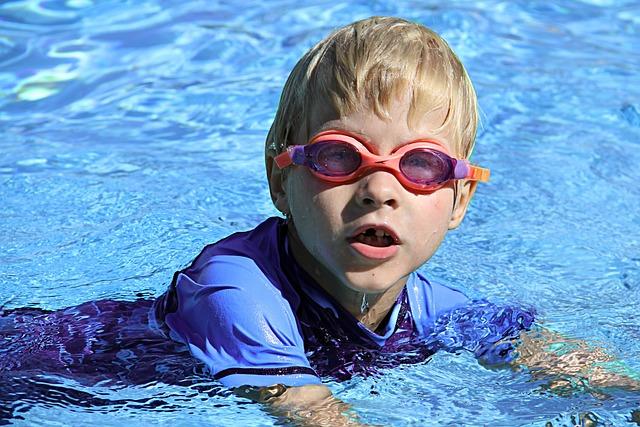As the leaves begin to change and temperatures dip, many families shift their focus to autumn activities – but experts are urging parents not to overlook the benefits of swimming lessons during the fall months. Traditionally viewed as a summer pursuit, swimming instruction offers year-round advantages that extend well beyond the pool. Health professionals and educators alike emphasize that incorporating swimming into your fall routine promotes physical fitness, water safety, and mental well-being, making it an essential consideration as the new season approaches.
Benefits of Adding Swimming to Your Fall Fitness Regimen
Swimming offers a full-body workout that combines cardiovascular endurance with muscular strength, making it an ideal complement to any autumn fitness routine. The low-impact nature of swimming is especially advantageous as it minimizes stress on joints and muscles, reducing the risk of injury during cooler months when the body tends to stiffen. Moreover, the resistance of water promotes enhanced calorie burning, which supports weight management as the seasons change and outdoor activity levels tend to decrease.
In addition to physical benefits, swimming also boosts mental wellness, which is crucial during shorter, darker days. Regular swimming sessions can help alleviate seasonal mood fluctuations by promoting the release of endorphins and improving sleep quality. The soothing properties of water provide a stress-relieving environment, making it a holistic approach to staying fit and balanced. Consider the following key advantages:
- Improved cardiovascular health through consistent aerobic exercise
- Increased muscle tone and flexibility due to water resistance
- Reduced joint impact compared to running or weightlifting
- Enhanced mood and reduced anxiety during seasonal transitions
| Benefit | Impact | Typical Result |
|---|---|---|
| Cardio Endurance | High | Better stamina |
| Joint Impact | Low | Less injury risk |
| Calorie Burn | Moderate to High | Weight control |
| Mental Health | Positive | Reduced stress |
How Swimming Supports Physical and Mental Wellness During Cooler Months
As the temperature dips, swimming emerges as a powerful ally in maintaining both physical vitality and mental clarity. Unlike many outdoor activities hampered by cold weather, indoor pools offer a consistent environment where the body can engage in low-impact cardiovascular exercise. This not only boosts endurance and muscle tone but also aids in regulating weight during a season often marked by less activity. Regular sessions stimulate circulation and improve lung capacity, a crucial benefit when battling the seasonal onset of colds and flu.
Mental health also sees tangible benefits from dipping into cooler months with swimming. The water’s soothing qualities decrease stress hormones and trigger the release of endorphins, which elevate mood and combat symptoms of seasonal affective disorder (SAD). Additionally, structured swim lessons provide a sense of routine and accomplishment, fostering discipline and confidence. To illustrate how swimming impacts wellness, here’s a quick overview:
| Wellness Aspect | Swimming Benefit |
|---|---|
| Cardiovascular Health | Enhances endurance & heart function |
| Muscle Strength | Full-body resistance training |
| Respiratory Efficiency | Improves lung capacity and control |
| Stress Reduction | Releases mood-lifting endorphins |
| Routine & Goal-Setting | Builds structure and self-confidence |
Expert Tips for Choosing the Right Swimming Lessons This Fall
When selecting swimming lessons this fall, prioritize instructors certified by recognized organizations such as the American Red Cross or YMCA. Their expertise guarantees a safe and effective learning environment. Additionally, consider lesson formats that suit your schedule and learning style – whether private, semi-private, or group sessions. Look for programs offering flexible timing to seamlessly fit into your busy routine and ensure consistent progress throughout the season.
Beyond certifications and schedules, the learning environment plays a crucial role in maximizing your experience. Facilities equipped with heated pools and well-maintained changing areas offer comfort during cooler months. Also, evaluate the instructor-to-student ratio, since smaller groups allow for more personalized attention, which significantly improves skill acquisition. To help you compare options quickly, the table below highlights key factors to consider:
| Factor | Ideal Choice | Why It Matters | |||||||||||||
|---|---|---|---|---|---|---|---|---|---|---|---|---|---|---|---|
| Certification | Red Cross, YMCA | Ensures safety & proper technique | |||||||||||||
| Lesson Type | Private or small group | Maximizes individualized feedback | |||||||||||||
| Facility Comfort | Heated pools & clean amenities | Enhances comfort and focus | |||||||||||||
Instructor Ratio It looks like the last row of your table was cut off. Here’s the complete version of the last row and the full table for clarity:
Let me know if you’d like me to help format this for your site or assist with anything else! In SummaryIncorporating swimming lessons into your fall routine offers a valuable opportunity to boost fitness, enhance safety, and enjoy a refreshing change of pace as the seasons shift. As temperatures drop and outdoor activities become more limited, pools provide a year-round option for maintaining physical health and building essential skills. Whether for children learning water safety or adults seeking low-impact exercise, swimming lessons remain a practical and beneficial addition to autumn schedules. Stay informed and consider making the splash this fall to keep your wellness goals on track. Add A Comment |





